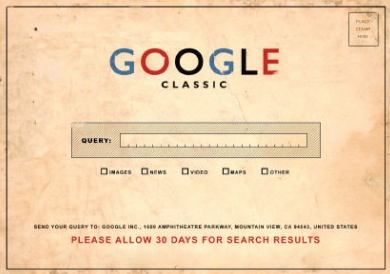An SEO Audit for small business is a comprehensive review of the “digital health” of a web site to understand if it’s well ranked by search engines, drives traffic, can be easily accessed by the visitor and most importantly, generates conversions: leads, new revenue, White Paper downloads, social engagement.
Category Archives: Search Engine Optimization
SEO How To Guide
Most businesses get frustrated with search engine optimization. It’s a blend of art, science and technology and to many firms a daunting task. Here is our basic SEO How To Guide that will give you a good snapshot of basic search engine optimization processes.
1) Remember search engines rank web sites not just pages. You want to think and act holistically - meaning, deploy a search engine optimization strategy that is integrated across your entire site. This may sound simple but it isn’t - our SEO how to guide is all about thinking and acting strategically to drive search rankings.
2) Don’t get lost in and sweat the details too much. In the end, good effective search engine optimization comes down to well written content that has some thoughts/recognition of keyword usage. But, for most web sites 70% of your traffic will come from “long tail keywords” - these are created over time and via consistent good quality content.
3) On Page Search Engine Optimization should have these basic How To SEO Guide Elements:
- Create a Title with less than 70 characters that reflects what your page is about, with a primary keyword or phrase used on the page. This Title tag should be at the top of your HTML code (we use plugins as below) in your <HEAD> tag. The top of the page (in HTML code) is important unto itself. And, remember this shows up in Search Engine Results and will drive visitors (or not) to your site. For a deeper dive visit Aaron Wall’s page about Titles which will give you much more insight.
- Write a Description that has a call to action to the viewer who is getting your page presented in search results. And, remember this also is used by search engines to determine what your page is about. Some agencies recommend “branding” your title with a reference to your company - the challenge is of course using the space to reference your brand, which in turn dilute the overall quality of your message. Optimum length is about 120 characters with spaces or 20-30 words.
- Use Header Tags - these tell Search Engines and your visitor what your content is all about. The most important is the The <H1></H1> that typically surround a post title and you should have only one H1 Tag per page, with sub Header Tags (five additional) used to define your subheadings on the page.
- You should be using images on your page as they drive search engine rankings and help to engage the visitor. All of these should have an Image Title and the Alt Tag should be used as well. Use the keywords that are optimize for the specific page where the image is located
- Keep the Web Designers in check and map to Search Engine Ranking goals first and let design take the back seat. A beautiful site with no traffic is not going to drive revenue, opportunity and/or engagement.
4) There is no single contributor to search engine rankings more important than quality content. Search Engines love fresh sites with quality content that is updated frequently. Content can be images, videos, podcasts, plain vanilla text, infographics and/or Instagram uploads - keep it fresh and meaningful.
5) Use WordPress for your web site. There is no other alternative technology platform that even comes close. It is search engine ranking friendly - we typically see search engine rankings for client sites within a matter of hours behind a new piece of updated content.
There are tens of thousands of plug-ins that extend WordPress, thousands of developers, it has a superb build in content management system, is updated frequently with much more robust capabilities, it’s free for the most part and it is used on about 75 Million sites and counting. It’s a no brainer.
6) Off site link building is in itself a topic that we could write reams about, as others have done. For a deeper SEO dive check out our “Why Google No Longer Loves Your Brand” - but, for the sake of brevity, here’s what’s important. Create good content that will be linked to and shared on the social web - this unto itself will drive high quality back links for your brand. Nuff said……
Other ways to develop quality back links:
- Offer infographics that can be downloaded (some brands develop standalone apps) across the web that incorporate a link back to your site.
- Create your own back links - we use a nifty WordPress plugin by Mark Jaquit called “Page Links To” - that enables you to upload a page and select a page via search to link to.
- Create quality Comment tags on sites that are targeted and that offer “do follow” (we are trying to avoid SEO geeky terms) - “do follow” (simplified) means you will get some link juice back from Google.
- Submit your site to quality Directories (note our emphasis on quality); i.e. Yahoo (yes, they are still alive), Business.com and/or vertical market directories in your market niche.
- Complete your Social Profiles on Twitter, Facebook, LinkedIn and/or second tier sites.
- Syndicate your content across Web 2.0 sites like Posterous (now part of Twitter) and StumbleUpon. If you’ve built back links into older pages (as we’ve done on this post), every time your page is published elsewhere you are creating a back link for yourself.
- Think social for link building - are you surprised that setting up a Google+ account and sharing content will create back links for your brand? The more you integrate social signals into your backlinking (big three: Facebook, Twitter Google+) the better. And, as search becomes more social, you are laying the proper groundwork for your brand.
7) Use and leverage Search Engine Plugins for WordPress. Two of the best (both are industry standards) are “All in One SEO” (by Semper Fi Web Site Design) and Yoast’s WordPress SEO - we’ve used both of these plugins across many sites for years and they can even be integrated together. Speaking of Yoast - he has a superb tutorial about all things SEO related and WordPress - it’s authentic, informative and well done.
8) You have to use Google Analytics for your web site - it’s an industry standard and your brand and online business will be remiss not using it for a snapshot of your web site. But, having said this, we also use StatPress across all of our client and publishing sites - it’s not going to give you a a deep dive into analytics but it will give you a fast snapshot take of visitor traffic and associated statistics. And, there is no learning curve associated with it like Google Analytics.
8) Last but not least - shooting for search engine rankings is like being nineteen again and trying to wade through the dating process……..in most cases you get your heart broken at least once. This holds for this SEO How To Guide - expect some trial and error, be patient and keep sharing content across the social way. Romance and search engine ranking sometimes occur when you least expect them……we digress……..
Why Google No Longer Loves Your Brand
Google has gone through another major update and it’s been garnering plenty of media comments, for good reason. Once again web sites, brands and companies are experienced a digital Tsunami that only Google can provide. And, “provide” may not be the term many are using in their analysis, feedback and observations. Significant amounts of traffic are now going being lost by brands big and small.
Google Panda Update Dissection
The “Google Panda Update” as the Wall St. Journal reported online and via the print pub (yes, Rupert does have real reporters working for him) pointed out, this update has had a significant impact on search rankings driven by Google penalizing sites that have been buying links and/or using back link development processes that are now deemed as being irrelevant and worse, signaling the site quality is bad.
The blogsphere lit up by “holier than thou” marketers that (soap box in hand) that jumped on the bandwagon, raising hue and cry about how buying links via social bookmarking and Web 2.0 sites was foolish, unethical and tantamount to bad strategic marketing. We won’t point fingers! But, we disagree.
Fortunes have been built on bookmarking, Web 2.0 and content platforms like Squidoo, Tumble and Posterous. Marketers and brands have been leveraging these sites for years for content syndication and back links development. Up till now this has been accepted marketing tactic for big and small brands and you can search on Fiverr, Elance and Freelancer today and find thousands of businesses deploying this strategy.
We aren’t advocating funky backlinking tactics. Nor can we say we haven’t done the same for ourselves and clients the last fifteen plus years - we have, as have thousands of SEO and marketing agencies. But, clearly Google has spoken and chickens have come home to roost for many.
What’s bad (funky!) backlinking you should avoid:
1) Sites with no Page Rank whatsoever - meaning they aren’t quality sites and probably never will be and clearly, Google doesn’t “Like” (sorry for using the term Mark) these kind of sites.
2) Any site with lots of OBLs (Outbound Links) on every page. That’s a clear sign they were funky long before Google decided to negate any potential impact they might have.
3) Any site that has not approval of comments or content submissions - meaning, the barriers to entry are non-existent and anybody can post content or comments.
4) Sites with bad content that clearly has no pride of authorship in the content. And, if no outbound links, that’s another bad signal.
5) A deceptive site with Page Rank of 6-7 that may look stellar to any digital marketer on the surface: but, if the site has any two of the above issues that can be discernible with the naked eye than avoid it like a tongue in cheek Jason Gay Review of all things cultural.
What Your Backlinkg Strategy Should Be Moving Forward
The biggest and emerging trend appearing on the backlinking horizon is (drumroll …..)social signals. Take your pick, LinkedIn, YouTube, Google+, Twitter, Facebook, Pinterest - Google likes them all and leverage accordingly by establishing a presence and sharing content.
Develop high quality content (images, infographics, videos, etc.) that pique and drive social sharing and or brand amplification via others.Emphasis here should be on “high quality content” - an endless stream of your activities via Instagram on Facebook doesn’t qualify.
Comments still work extremely well for backlinking, brand awareness and visibility in targeted communities that are connected with and engaging with the on page content. You not only generate backlinks but you get your brand in front of a very targeted audience, driving incremental opportunities over a period of time.
Embrace blogging and do it the right way. If you are on WordPress (you should be!) you should be intelligently linking most of your posts back into your own site. Over time these will count as backlinks and also help to drive your site visitors deeper into your site.
Take every chance you can to build (link to interior pages not just the home page/vary your links) backlinks via any profiles you have across the web. Quora, LinkedIn, Plancast, Facebook, YouTube and many other sites (second tier) enable you to upload multiple links. And anchor text them when/where you can; meaning, embed a link in keywords that are consistent with your traffic and content strategy. Marketers take not, sites like Quora are starting to embed their platform with other providers/platforms like Facebook - giving you powerful content syndication capabilities.
It seems many brands hire high powered PR Agencies who do a great job on the press release wording and editorial reach. But, many don’t understand basic SEO principals or if they do, don’t leverage the PR properly for backlinks.
PR is one of the best ways to drive high quality backlinks to your site across hundreds or thousands of sites - the backlinks are typically high quality, can/should be setup with anchor text embedded in the URLs and you can integrate 1-3 backlinks into your PR via most paid providers. We like Press Release Monkey (ignoring the name) - they are low cost/high value and easy to work with.
If you need a tip on the image……just comment away and we will try to help you cross the cultural divide…..
Search Engine Marketing Results
Search engine marketing results drive significant traffic and many brands live or die based on search traffic, although most don’t really understand what’s always driving the traffic. The typical mantra for the SEO manager in charge is typically, do more with less; or, what’s going to give us better search engine marketing results and what is this going to cost? Then, let’s rock!
You may be much better off not wasting a lot of time on search engine marketing results and get much more marketing ROI with a stellar content strategy, coupled with basic on and off page SEO optimization. Why? It’s a shifting landscape out their in search engine land and Google’s algorithm, not to mention second tier search engines is always in flux.
Who really understands robots, search algorithms, on page vs. off page SEO - the arcane complex terminology of search marketing is like a mirage in the desert - looks great from a distance but when you get there your frequently left with nothing.
Our recommended Search Engine Marketing Strategy in five easy steps:
1) Do basic keyword research using Google Analytics (which should already be set up on your site) and come up with 50-75 Keywords to use for your content strategy for 90-120 days. Then, build content around these with 3-5% keyword saturation per page, blog post or piece of content. Don’t go crazy with keywords - Google and others will figure out what your content is about. But, do the baseline work.
2) Do some “off page” link development via Press Release marketing, integrating your content URLs with your social media accounts (Twitter, Facebook, LinkedIn, Pinterest if you have an image strategy) - each time a page or blog post is updated it needs to be syndicated via your social media accounts. Do some baseline link development work with social bookmarking, PR syndication (as above), comment tagging on targeted web sites, build a Squidoo or Hub Page with good content that reinforces your brand messaging, with links back to your site.
3) Make sure you content is being syndicated - if you are using WordPress (you should be!) then utilize the build in pingomatic services that WordPress includes (we have a custom list), make sure your content is automatically posted to as many third party (social and others) web sites. It’s a brutally competitive landscape for traffic - the old days of building a web site and hoping you get traffic are long gone. Drive competitive advantage and search engine marketing results via aggressive content syndication on the best platform, WordPress.
4) Forget about SEO and build your newsletter list - make sure you have a call to action on your web site for Newsletter signups and update this once a month. The defacto industry standard is Aweber, although there are a ton of WordPress plugins that will give you a broader brand reach by just shooting out an update of your blog to subscribers.
5) Publish a blog on a WordPress Platform - publish as frequently as possible, with a minimum of 2-3 times per week. Each post should have some keyword optimization and be broadly syndicated across the social web and make sure you have a Feedburner account set up and pingomatic services as above.
If you follow these five basic steps you’ll generate search engine marketing results. If you want a deeper dive into search marketing we highly recommend signing up for Aaron Wall’s SEO Book (subscription service) - it’s high value and low cost. Aaron and his team know more about search engine marketing than many “high visibility” search marketers feature in conferences.
Google Business Listing
Google is clearly starting to favor local business listings, especially those with quality content. Google’s recent delisting of content farms certainly underscores the shift in strategy from emphasizing the value of high quality content versus funky dreck.
It’s incumbent for any business, from corporate behemoth to small business, to leverage any/all shifts occurring in Google’s strategy. Many/many businesses don’t understand how to do a Google Business Listing! Not to mention, those that try, but fail miserably at the attempt. Our take:
- Log into your Google Account and select My Account to begin (or create a new account if you don’t have a Google Account)
- Choose Local Business Center from the list of options
- Enter baseline info about your business
- Verify the listing
Claim Your Google Business Listing
- Do a search via Google Maps for your Business
- Select more info
- Select link for business owner
- Click add new listing
- Enter info reflected in the listing and click next
- Select the listing shown by Google that matches your business
- Verify via email that you are the owner
Now for the creative part. After completing the set up and claiming process, you’ve successfully established a presence and now need to add quality brand elements to make your listing stand out from the digital herd.
- Add your corp logo and lots of photos - these help to personalize your Google Business Listing.
- Solicit reviews from your customers (just like recommendations on LinkedIn) - do not hire a marketing firm or consultant to write a bunch of reviews and upload them. These stand out like a sore thumb, ruin your credibility and are dishonest to say the least.
- Sick of giving 50% off to Groupon or Living Social? Then add a coupon - these can be printed right from the site. Pretty cool - drive a sense of urgency. Make sure you have some way of keeping track of the coupons.
- Its a Google property right (rhetorical question)? Upload your YouTube videos as well and make sure you feature videos that are interesting. Should be under two minutes - people online have the attention span of gnats, especially Twitterholics.
- Add a link from your home page to drive visitors to your Google Business Listing and solicit a review from them. Sprinkle these requests into your social stream via Twitter or Facebook on some regular basis. Keyword is “occasionally,” don’t beat people over the head. Less is more……
Why is a Google Business Listing so critical? It can deliver a large number of visitors ranging from hundreds to thousands of visitors every month, depending on your location and how well your Google Business Listing is optimized. It’s well worth your time. Even if your brand is national in scope in terms of customer focus, still a good thing to set up a Google Business Listing.




















